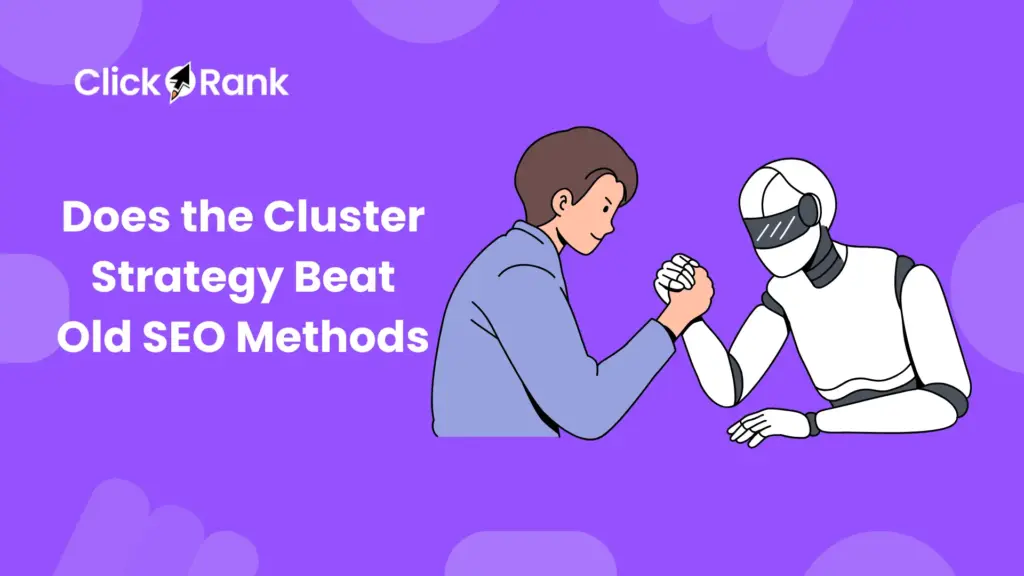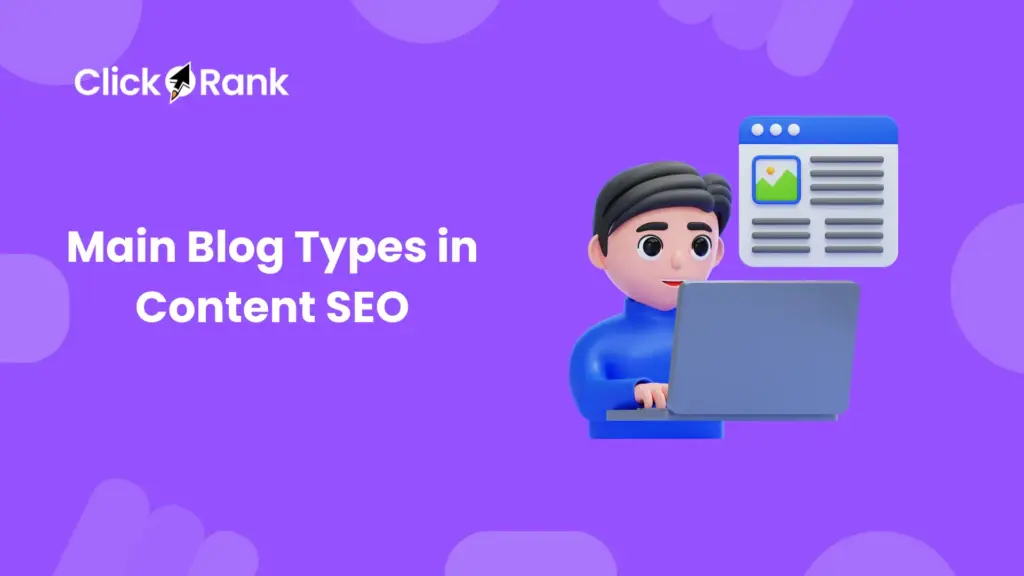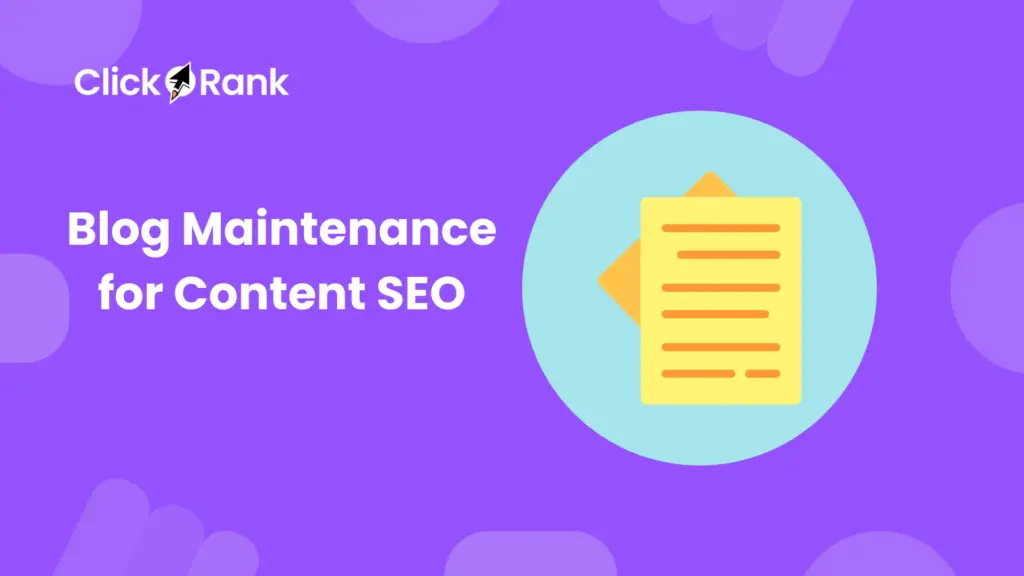Do you feel the pain of writing great content that Google simply ignores? You publish article after article, yet your rankings barely move, and your site architecture looks like a confusing, tangled mess. This problem often happens because your content lacks internal relevance—it doesn’t show Google the true depth of your expertise.
I know how frustrating this can be, but there is a clear fix. We need to move past simple keyword thinking and adopt a robust SEO Content Strategy. This article will teach you how to organize your site using Topic Clusters to build real authority that search engines and users trust.
Before we dive in, let me tell you: ClickRank is here to make this transition easy. Our platform automates the hard work. We use our ClickRank Audit, connected to your Google Search Console, to see where your content is weak, then offer One-Click Fixes for your linking and optimization problems.
What Are Topic Clusters and Why Do They Help SEO?
A Topic Cluster is a way to organize your website content around a single, broad subject. Instead of separate articles fighting each other, they work together as a strong team to signal topical authority to Google. I feel confident this strategy is the future of content marketing because it matches how people actually search and learn.
Is a Topic Cluster a New Content Idea?
No, the idea of grouping related content is not new, but the name and application have changed. It is a refined evolution of old content marketing, moving away from Content Silos that kept pages separate. This modern approach focuses on Semantic SEO, where we map out concepts and relationships, not just keywords.
How Do Clusters Build Authority with Google?
Clusters create a clear, defined map of your expertise. When a Pillar Content piece links strongly to many detailed Cluster Content pieces, Google sees a deep resource. This clear Internal Linking Structure tells search engines you are the definitive source, which boosts your Search Engine Results Pages (SERP) Authority.
What Parts Make a Topic Cluster Work?
A Topic Cluster is a simple, yet powerful Hub-and-Spoke Model. Understanding the two main parts is key to successful Content Strategy Implementation. You must design these parts correctly, or the whole system will fail.
What Is a Pillar Page and What Is Its Job?
The Pillar Content is the central ‘hub’ of the cluster. It is a broad, high-level guide covering the main topic. Its main job is to target a high-volume, competitive head term and act as the main destination for your visitors. I see the Pillar Page as the confident leader of the entire topic.
What Are Cluster Pages and How Do They Support the Pillar?
Cluster Content pieces are the ‘spokes.’ They are detailed articles that cover specific sub-topics related to the pillar. These pages link back to the Pillar Page using Contextual Linking to confirm the pillar’s importance, ensuring deep internal relevance across your site.
How Does Linking Make the Cluster Strong?
The power of this entire model is not just the content; it is how you connect it. A strong linking strategy is vital for Site Architecture Optimization. It’s the circulatory system of your website, and we must ensure it moves smoothly.
Why Is Internal Linking Important for Relevance?
Internal links connect your content, showing Google which pages are the most important. A strong, intentional Internal Linking Structure makes it easy for the Googlebot to crawl your whole site, helping it understand the relationship between your topics. This clarity is a huge SEO win.
How Do Contextual Links Pass Link Equity?
Contextual Linking means placing links naturally within the text, not just in a sidebar. These links act like votes of confidence. When a detailed Cluster Page links back to the Pillar Page, it performs Link Equity Transfer, giving the pillar page a strong ranking boost. I believe this is one of the most powerful moves you can make.
How Does the Cluster Strategy Beat Old SEO Methods?
The old way of creating content—one keyword per page—caused many problems. The new SEO Content Strategy fixes these issues by thinking bigger than one single term. It brings structure and purpose to your content creation.

Can Topic Clusters Stop Keyword Cannibalization?
Yes, they absolutely can! Keyword Cannibalization Prevention is one of the biggest benefits. Because each Cluster Page focuses on a unique, specific sub-topic or long-tail keyword, your pages stop competing against each other. Instead, they support the main Pillar Page, which makes us happy to see better results.
Why Is Topic Depth Better Than Single Keywords?
Google’s modern algorithm wants to see Topical Authority, not just keyword stuffing. When you build a cluster, you show true topic modeling and depth of knowledge. This is far better than chasing single keywords because it answers the full User Journey Alignment from basic questions to advanced decision-making.
How Do You Build a Strong Topic Cluster?
Building a cluster is a methodical process. It requires planning, not just writing. ClickRank Audit can quickly highlight content gaps and linking issues, but here is the manual framework you need to start with.
What Research Tools Help Find Good Cluster Topics?
You need proper Keyword Research for Clusters. SEO Tools like Ahrefs or SEMrush help you find broad topics and the hundreds of related questions people ask. These tools are key to successful Search Intent Mapping so you know what content to create next.
How Do You Check for Content Gaps?
Content Auditing is essential to see what you have and what you are missing. You map your existing content against your Pillar Topic idea. Any questions that searchers ask but you do not answer are Content Gaps—these gaps become your new Cluster Pages.
What Steps Do You Take to Make a New Cluster?
First, define your main Pillar Topic. Second, find 10-20 specific sub-topics (Cluster Ideas). Third, write your Pillar Content using proper Pillar Page Design. Fourth, write the Cluster Content, and fifth and most important, link everything together in the Hub-and-Spoke Model.
What Problems Can Happen with Topic Clusters?
Even the best strategies can fail if we make simple mistakes in the Internal Linking Structure. We must be vigilant about maintenance and link quality. I feel a responsibility to warn you about these common failures.
Are Your Pages Orphan Pages?
An Orphan Page is a Cluster Page that has no links pointing to it from other pages on your site. This page gets zero Link Equity Transfer and signals low importance to Google. ClickRank Audit finds these lonely pages instantly so you can fix them with One-Click Fixes.
What is Circular Linking and Why Does it Hurt SEO?
Circular linking is when pages link only to each other in a loop, without pointing to the main Pillar Page or other high-authority pages. This confuses Google and wastes crawl budget, hurting the overall Internal Relevance signal. Avoid this mistake!
Don’t Just Write Content, Dominate the Topic!
It’s time to stop guessing and start organizing. You now know that Topic Clusters are the key to unlocking true Search Engine Results Pages (SERP) Authority and solving your internal relevance issues.
Why waste your time doing manual checks for Orphan Pages or broken links? Let ClickRank do the heavy lifting. Run a free, fast ClickRank Audit right now to see your site’s exact Content Gaps and linking problems. Start using Smart Recommendations to implement One-Click Fixes and watch your content climb to the top of Google.
How Many Cluster Pages Do You Need for One Pillar?
You need enough Cluster Pages to cover the broad topic completely, showing Topical Authority. I recommend starting with at least 5 to 10 highly relevant Cluster Pages, but some successful clusters have 20 or more. Focus on quality and coverage, not just a fixed number.
Should I Use the Same Keywords in All Cluster Pages?
No, you absolutely should not. Each Cluster Page must target a unique, specific aspect or long-tail keyword related to the pillar. The Pillar Page targets the broad term, and the Cluster Pages handle the detail. Using unique terms prevents Keyword Cannibalization.
Can Topic Clusters Help a Brand New Website Rank Fast?
Yes, they can provide a huge acceleration boost. A well-built cluster immediately creates strong Internal Relevance and authority signals that a new site badly needs. It establishes Topical Authority faster than creating scattered, individual articles.
How Often Should I Audit My Topic Cluster Links?
You should audit your Internal Linking Structure at least once per quarter, but more often is better. ClickRank Audit makes this easy by running an AI-powered SEO audit in minutes. It finds broken or missing links before they hurt your performance.
What If My Pillar Page Is Not Ranking Well?
If your Pillar Page is not ranking, it means the Internal Relevance signal is too weak. First, check that all Cluster Pages link back to the pillar using strong anchor text. Second, use ClickRank's On-Page Optimization feature to ensure the Pillar Page aligns perfectly with the target search intent and core topic.


